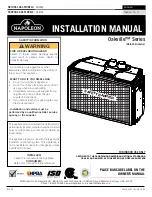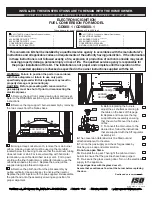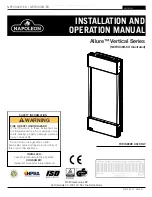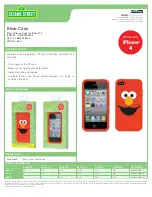
1
23871 6/17
For additional product and safety information go to salsacycles.com/safety
GUIDE SEATPOST INSTRUCTIONS
At Salsa, we believe that a sense of adventure makes life better.
The bicycle can be so much more than just a bike; it’s a path
to new places, new people, and amazing experiences.
Thank you for your purchase. We hope it makes a good riding
experience even better!
Salsa. Adventure by bike.
®
WARNING: Cycling can be dangerous. bicycle products
should be installed and serviced by a professional mechanic.
Never modify your bicycle or accessories. Read and follow all
product instructions and warnings including information on the
manufacturer’s website. Inspect your bicycle before every ride.
Always wear a helmet.
Compatibility & Intended Use
Intended for ASTM 4 conditions defined as downhill
grades on rough trails at speeds less than 40 km/h
(25 mph). Jumps are intended to be less than
122 cm (48").
Please see salsacycles.com/safety for complete list
of use conditions.
Salsa Guide seatposts are available in both carbon and aluminum
variations in 27.2, 30.9, and 31.6 mm diameters, with zero and 18
mm offset available in all three diameters.
SEATPOST DIAMETER IS CRITICAL. The diameter of the seatpost
you are installing must precisely match the inside diameter of the
frame’s seat tube. If you are not sure of the right size, consult your
local bike shop.
Additional safety info can be found at: salsacycles.com/safety
Tools Required
• Carbon friction paste. (For carbon seatposts or aluminum
seatposts in carbon frames)
• Hex wrenches in 4 mm, 5 mm to match size of seat
clamp fastener
• Properly calibrated torque wrench that measures in Nm
SEATPOST INSTALLATION
WARNING:
• Make sure the seatpost is installed so the minimum insertion
line is not visible when riding as this could cause the seatpost
to fail.
• Never put a scratch in a carbon seatpost to mark saddle height!
Doing so can ruin the seatpost and cause it to break. Instead,
mark your seat height with a piece of tape or with paint.
• Overtightening the seatpost clamp on the frame can ruin the
seatpost and even damage the frame. Tighten the seatpost to
the recommended torque spec for the frame, seat clamp, or 9
Nm, whichever is less.
• Before sitting on the bicycle to check for proper seatpost
height, tighten the seatpost bolt clamp on the frame to secure
the seat in place. If it is not tight enough, it may cause the
seatpost to slide down and scratch or gouge the surface which
could cause damage and make the seatpost unsafe to use.
1. Make sure that the inside of the frameset’s seat tube is dry
and free from any dirt, burrs, or grease.
NOTE: Do not use grease on your seatpost as grease can cause
damage to the carbon fiber. Carbon paste is recommended.
2. Coat seatpost with carbon paste.
3. Insert the seatpost into the frame and lightly tighten the
seatpost clamp to hold the post in place while installing
the saddle.
4. Once the desired height is achieved, tighten seatpost clamp
bolt on the frame or the seatpost clamp. This torque value
should be the lowest specified torque value for your frame,
seat clamp or seatpost. Torque should not exceed 9 Nm.
SADDLE INSTALLATION
WARNING: Before making final adjustments to the saddle
position, tighten the saddle rail clamp to a maximum of 9 Nm
and the seatpost clamp in the frame to the clamp or frame
manufacturer’s recommended torque setting. Mounting the
bicycle with a loose seatpost or saddle could result in injury
or cosmetic or structural damage to the components.
1. Make sure the post is installed into the frame deeper than the
minimum insertion line at the bottom of the seatpost.
2. Loosen the front and rear saddle clamp bolts and install
the saddle.
3. Lightly tighten the front and rear saddle bolts so the top of the
saddle is parallel to the ground but the saddle is loose enough
to adjust fore and aft position. Tightening or loosening saddle
rail clamp bolts will allow for tilt adjustments.
4. Adjust the saddle fore and aft position to suit your fit
requirements.
5. When satisfied with saddle placement, tighten both saddle rail
clamp bolts to 9 Nm max.
Ongoing Maintenance
WARNING: Improper installation of bolts may lead to product
failure, causing serious injury. Do not exceed specified torque
values. Periodically inspect bolts and retighten if required.
CARBON CARE
Seatposts that have been involved in a crash or show signs
of damage such as cracks, chips, loose fibers, or fatigue
marks should be taken out of use immediately and inspected
by a qualified expert to ensure they’re still safe. If evidence of
damage is found, the component should be replaced or repaired.




















